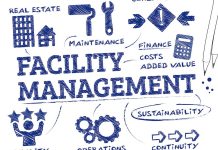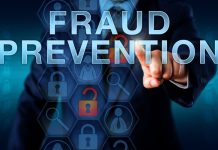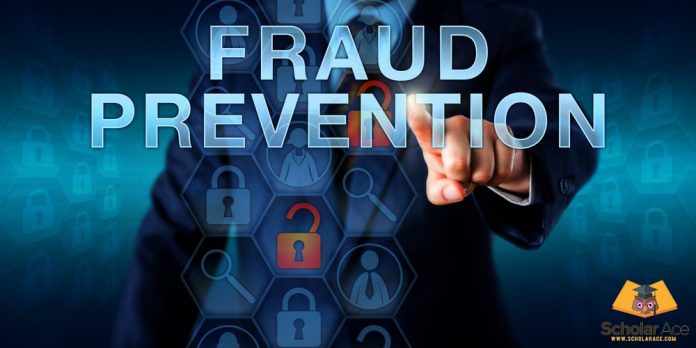You need to write a CFE examination and pass it before you’re qualified to receive a CFE certificate. Anti-fraud experts are known to operate a busy schedule so you can take the Certified Fraud Examiner Exam online through a computer at your own convenience. In this guide you’ll find a CFE question bank with lots of questions along with answers to help you prepare for all four modules of CFE really well. The certificate offered by the Association of Certified Fraud Examiner (ACFE) is ever more a distinguishing qualification in the anti-fraud profession. You need to know what the meaning of CFE is too.
Table of Contents
What Is The CFE All About?
A Certified Fraud Examiner (CFE) is an authority within the anti-fraud professional world. He/she is distinguished as a professional in the preclusion, deterrence, and investigation of fraudulent practices. CFEs possess skills that no other professional in the anti-fraud community can boast of. They merge complex accounting dealings with an in-depth knowledge of Legal matters, investigative expertise, and how to deter fraud and further prevent it. Hence, they are the uppermost criteria held by the ACFE. ACFE makes available the necessary trainings and education needed for an individual to become a Certified Fraud Examiner.
How To Become A Certified Fraud Examiner
The purpose of these training and examination is to equip the CFE with the initial skillset to detect fraud signals, defend worldwide economy by uncovering fraudulent practices and devise methods to avoid fraud from happening. No organization worldwide regardless of size, is immune to fraudulent practices. These work-related frauds are universal and destructive in nature.
Read more: Everything You Need To Know About IFMA FMP Certification
According to a study carried out by the Report to the Nations in 2016, small organizations have a tendency to suffer extremely great losses than large organizations because they employ lesser anti-fraud professionals, making them susceptible to fraud risks. In fact, there is an estimated 5% losses of revenues to fraud per year owing to work-related fraud and abuse.
How the CFE Certificate Can Help Boost Your Career and Organization
The distinctive skill set a CFE acquires has a significant impact on the development of your organization. According to a study carried out by ACFE, organizations that hire CFE staffs detect fraud 50% earlier than organizations who do not have CFE on staff, and they also suffer 55% less losses. The Certified fraud examiner salary is pretty much worth taking the CFE exams.
Certified Fraud Examiner Manual Free Download
1. Benefits for the Organization
When you provide your employees with the opportunity to acquire the CFE certificate, you get a remarkable return on the money spent, take full advantage of the worth of your staff and be rest assured that you’ve employed the finest anti-fraud experts out there. Other benefits include:
- You’ll also be able to employ the knowledge and professionalism needed to evaluate fraud threats, strategist and apply controls and also manage the ongoing risks your organization may be facing.
- Your business will enjoy unquestionable commitment to competence and honesty.
- You’ll also have a team of experts who are constantly undergoing training and updated on the ground rules, top methodologies and current trends.
2. Benefits for the Employee
The following are some of the reasons why CFE exam is advantageous to your career:
1. Increased Earnings
According to the Compensation Guide for Anti-Fraud Professionals 2017/2018, you are likely to earn 31% more as a CFE professional than your colleagues who are not CFE certified, which is clearly showed prominent increase in certified fraud examiner salary.
3. Boosts Your Career
The certificate you obtain from ACFE after completing your CFE exam is a proof of your proficiency and knowledge in the anti-fraud field, which will establish your great level of ability, understanding and expertise and also increase better chances of certified fraud examiner jobs in the market on higher salary.
4. Professional Credibility and Prominence
The CFE certificate is recognized globally as the typical document of distinction in the anti-fraud community. So, you can work in any part of the world with this certificate.
5. Distinguishes You from Your Non-certified Colleagues
The CFE certificate issued is often the most favored qualification in the employment practices of companies, legal institutions and governmental parastatals.
Steps for Becoming an Accredited Member of the Anti-Fraud Association
To be able to take the CFE Exam, you must fulfil certain obligations including:
- Join the Association of Certified Fraud Examiner: Become a member of the ACFE and get the appropriate Certified Fraud Examiner exam application form.
- Be ready for the Certified Fraud Examiner Exam: There are various resources available on ACFE’s website for you to use. The CFE certification cost for exam is $400 but for that you have to be member of ACFE which costs around $175, so total CFE exam cost including membership and examinations is $575. You can purchase the CFE Exam Prep Course (a computer self-study course) as a guideline while you’re preparing to take the exam.
- You can also attend the CFE Exam Review course which is a four-day instructor-led program that provides all essentials required for you to scale the exam and become a recognized CFE. You have to option to learn and revise by yourself by purchasing the Fraud Examiners Manual – which is a 2,000-page manual, unravelling the procedures and processes of the examination. This guide contains suggestions regarding the CFE exam questions and its answers. You can get fraud examiner manual free download pdf by filling the google form below.
- There are various websites that provide CFE exam material for free that you should definitely look into for further guidance. These resources are an excellent source for a high exam pass rate without causing a dent to your pockets.
- Applying for the Certified Fraud Examiner Exam: You have to completely fill the CFE Exam application form online on the ACFE’s website for taking the exam. The Certified Fraud examiner exam application online comprises of four sections, namely qualifications, experience and character, signature statement and payment respectively.
- You are also required to submit supporting documents along with it to the certification portal on ACFE’s website. These supporting documents include your photo, proofs of education, proofs of experience and professional recommendations. Once this application is completed, it will take around 3-5 working days to review it and will be notified via email.
- You Must Pass the CFE Exam: you must pass the examination before you can be issued a certificate. The exam is divided into four sections in the areas of anti-fraud practices. As soon as you’ve cleared the exam, it will be reviewed by the ACFE’s relevant authorities. Once approved, you’ll become a fully qualified Certified Fraud Examiner.
Here’s a helpful YouTube tutorial to help you understand the CFE Exam better and make your journey to becoming a certified fraud examiner easier:

CFE Examination Format
The general format for the questions that come out in the CFE Exam is the ‘Multi-Choice Format’ or the ‘Multi-Choice Question Format’ and the ‘True/False Question Format’. In the Multi-Choice Question Format, the CFE Exam candidates are required to pick the correct answer from the four options tagged a, b, c, d. While the True/False Question Format requires the CFE Exam candidates to select ‘True’ if the statement is correct or select ‘False’ if the statement is wrong.
Read more: Countries Where International Students Can Earn Money While Studying Abroad
The best way to answer questions like this and offer logical answers is to guess logically by eliminating certain options. After reading the questions, as you go over the options, you will discover at least one or two wrong answers. Eliminate them and then work with the remaining options. This way you will boost your chances of picking the correct answer. An example of how the Multi-Choice and the True/False Questions work will be illustrated below.

In the CFE exam, you will only be able to see one question at a time on the screen, although there will be a provision on the screen to jump to the next question if you so desire. You can either choose to answer the questions chronologically, that is, according to how they are displayed, or you can pick questions randomly as you go. The screen will display the number of questions you attempted and the numbers of questions unanswered. You select one of the best answers by pressing the letter on the keyboard or by using your mouse to select one of the options. You can only select one answer to each question.
GET YOUR QUOTE NOW
Whatever method you choose to answer your questions, ensure you provide an appropriate answer for every question. Make sure you have a thorough understand of the questions you’re being asked before you select an answer. Note that once you run out of time, your computer will automatically submit your exam for assessment, and you will have to stop regardless of whether you’ve answered all the questions in the required sections or not.
Taking the CFE Exam
Your understanding of the CFE course will be tested on four main sections. Each section is made up of a total of one hundred questions, with a time frame of 75 seconds assigned for each question to be answered. You are required to complete and submit all the sections for grading within thirty days of entering your exam activation key. You must complete each section of the exam once you start.
Read more: CEF Exams | What Is An Importer To Do?
Also, during the exam you are permitted to observe a five-minute recess. By design, the exam clock will immediately pick up where you left off after the exhaustion of the five minutes break. You are not expected to finish answering all the questions from the four sections in a sitting. It is advisable to take one section at a time. You must each section of the Certified CFE Exam within three successive efforts. These sections are:
1. Financial Transactions and Fraud Schemes
This section of certified fraud examiner test your understanding and knowledge of the type of fraudulent practices that occur in the accounting documents of financial institutions will be tested. You will need to demonstrate an in-depth knowledge of the fundamentals of accounting, accounting theories, and contract and procurement fraud among others, to pass the financial transaction and fraud schemes.
The free CFE exam study materials for financial transactions and fraud schemes has 15 fundamental areas that are part of the fraud examiner requirements. The CFE questions in the financial transactions’ sections are divided into three principal subject areas – general accounting concepts, infractions by employees and external infractions. This section of the CFE exam tests the examiner on the ability to detect fraud as it relates to the finances of the organization being examined.Here you also find CFE question bank with lots of questions along with answers which help to prepare your all four modules of CFE really well.
The sections are asset misappropriation, financial statement fraud, accounting concepts ( inventory and other assets, fraudulent disbursements and cash receipts), contract and procurement fraud, computer and internet fraud, consumer fraud, healthcare fraud, insurance fraud, payment fraud, financial institution fraud, identity theft, theft of intellectual property and data & bribery and corruption.
Example 1: Contract and Procurement Fraud
Which of the options below is not a warning signal that might point toward the presence of a need recognition scheme?
a. The purchasing list doesn’t contain an acceptable list of backup surplus.
b. The purchasing entry has massive number of surplus items disregarded as scrap.
c. The purchasing entity contain an abnormally great necessity for inventory levels and stock.
d. The materials for the purchasing entity are being ordered at the optimum reorder point.
The correct answer is “D”. Procurement actions mostly start with the procuring entity making a determination of its general needs.
Example 2: Consumer Fraud
The type of fraud that is often aimed at assemblies of people who share similar social networks including neighborhoods of immigrant groups or racial minorities is called______
a. Reloading
b. Consolidation
c. Affinity Fraud
d. None of the above
The correct answer is “C”. Affinity Fraud is generally aimed at groups of people who share similar social networks and their neighborhoods is mainly occupied by racial factions, particularly immigrant groups.
Example 3: Contract and Procurement Fraud
Which of the actions below are incorporated in the solicitation phase of procurement’s including free and open competition?
a. The procuring entity implements its contractual responsibilities.
b. The prospective contractors organize and submit their bids.
c. The procuring entity recognizes its essentials and improves the criteria used for the contract.
d. The procuring entity regulates the technique for purchasing the goods and services.
The correct answer is “B”. The solicitation phase includes the bid preparation or organization, bid submission and bid solicitation.
Example 4: Consumer Fraud
Rip-offs from Real estates can be detected without difficulty because there is practically always a pressure to speed things up or “now-or-never” pitch from the scammer.
a. True
b. False
The correct answer is “A”. Rip-offs and scams related to real estates can be detected without difficulty. There is always the pressure to speed up things as victims are often persuaded by the perpetrators that they are participating in a deal of a lifetime.
Example 5: Fraudulent Disbursements
From the following which can be considered a red flag as it pertains to check tampering
a. Payee addresses match employee addresses
b. Large gaps in the check register
c. Non-payroll checks payable to employees
d. All of the above
According to the CFE fraud examiner’s manual, the correct answer is “D” because all the following are red flags for check tampering. You can get certified fraud examiner manual free download pdf from the link below.
Certified Fraud Examiner Manual Free Download
Example 6: Health Care Fraud
______________ is the process of paying someone to go through an unnecessary medical procedure and then billing the patient’s insurer or health care program.
a. Rent-a-patient schemes
b. Fictitious patient schemes
c. DRG creep schemes
d. False cost reporting schemes
The correct answer is “A” and it is a so-called rent-a-patient schemes which involves individuals being paid to undergo medial procedures that are not necessary and then billed to the patient’s insurer or health care program. Such schemes occur in countries that use a third-payer system or single-payer system that allows private providers to bill health care programs.
Example 7: Cash Receipts Schemes
Recording the cash register total to the amount of cash in the drawer is an ineffective method of detecting a cash larceny scheme.
a. True
b. False
The correct answer is “B”. in contract to swimming, the records of the register should not correspond to the cash in the drawer when a cash larceny scheme has occurred and thus for this reason cash larceny schemes are more easier to detect than skimming schemes.
Example 8: Cash Receipt Schemes
Steff, a manager for a retail store, suspects his teller is swimming sales. Steff will be able to detect this kind of scheme by comparing their register totals to the amount of money in their cash drawers.
a. True
b. False
The answer is “B” because when a worker skims money by making sales of goods that are off-book, it is not possible to discover the illegal action by reconciling the register to the cash drawer because the sales was not recaptured on the register.
Example 9: Bribery and Corruption
Corruption is the unlawful use of power to acquire something for yourself or someone else contrary to the duty or rights of others.
a. True
b. False
The answer is “A”. corruption is the wrong use of influence.
Example 10: Bribery and Corruption
Andrew is a purchaser for a large government entity. XYZ Pty informs Andrew that if he will award XYC at least $6 million in contracts over the next two years, XYZ will hire Andrew at the end of the two years at twice his current salary. However, no actual money changed hands, this can be not be considered a bribery or corruption scheme.
a. True
b. False
The correct answer is “B”. This is because bribes are not necessarily just direct payments of cash or goods.
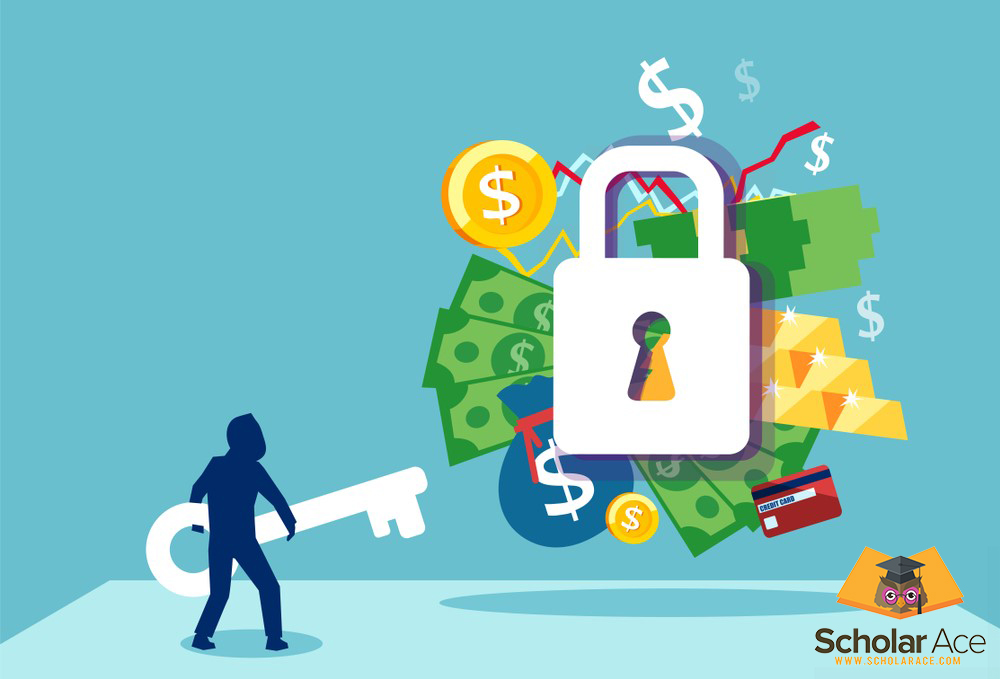
2. Fraud Prevention and Deterrence
You’ll be evaluated on your knowledge and understanding of the reason behind the escalating fraudulent activities in the corporate world and how to avoid and discourage fraud. The CFE exam review course helps the candidate to be prepared for topic areas like comprehending criminal behavior, management’s fraud-related responsibilities, corporate governance, white-collar crime, fraud prevention programs, auditor’s fraud-related responsibilities, ethics for fraud examiners fraud risk management/assessment, CFE code of professional standards, ACFE code of professional ethics.
Read more: Studying High School Abroad – Top Tips and Options For International Students
These CFE question bank helps you to understand cfe better and do the exam. This section attempts to prepare the CFE in the detection and prevention of organizational fraud schemes by identifying patterns and understanding behaviors or circumstances that encourage fraud tendencies.
The following are some of the patterns of the questions you’ll encounter in this section:
Example 1: Fraud Risk Assessment
The level of risk encountered by organizations is influenced by which of the following
a. Leadership team ethics.
b. The efficiency of its internal controls.
c. The geographical locations where it operates.
d. All of the above
The correct answer is “D”. The risk faced by an organization is influenced by a number of factors including all of the above options.
Example 2: Understanding Criminal Behavior
Which of the statements below is correct based on the differential reinforcement theory?
a. Positive stimuli weaken behavior.
b. When punishment is avoided, behavior is weakened.
c. When rewards are obtained, behavior is reinforced.
d. Negative stimuli reinforce behavior.
The correct answer is “C”. As per the differential reinforcement theory, behavior is reinforced when punishment is escaped/avoided (negative reinforcement) or when positive rewards are gained. That means that behavior is destabilized by negative punishment and negative stimuli.
Example 3: Fraud Prevention Programs
Proactive audit techniques including surprise audits and fraud assessment, is able to assist in proving the intention of the management to aggressively search for fraud.
a. True
b. False
The correct answer is “A”. Applying proactive audit techniques including the use of surprise audits, fraud assessment and analytical review processes, prove the intention of the management to aggressively search for potential fraudulent practices rather than waiting for the occasions to be detected.
Example 4: White Collar Crime
Who is the criminologist accountable for the popular hypothesis of the Fraud Triangle?
a. Marshall B. Clinard
b. Donald R. Cressey
c. Immanuel Kant
d. None of the above
The correct answer is “A”. Donald R. Cressey based his research primarily on embezzlers throughout his Ph.D. program in 1940. His findings resulted in the popular theory which is regarded as the Fraud Triangle.
Example 5: Fraud Prevention Programs
The way that management handles incidents of fraud within the organization plays and important role in the fraud prevention program that it enforces.
a. True
b. False
The correct answer is “A”. The way that management handles incidents of fraud within the organization plays a main part in its fraud prevention program. Particularly, this has to be made clear to every employee that the company maintains a zero-tolerance policy on fraud.
Example 6: Management’s Fraud-Related Responsibilities
For a corporate compliance program to be effective, the company should monitor proactively and evaluate the program’s component.
a. True
b. False
The correct answer is “A”. The US Corporate Sentencing Guidelines provides a benchmark and foundational guidance for organizations in all countries for developing effective compliance programs.
Example 7: Fraud Prevention Programs
Which of the following is an effective way that helps to hinder fraud through the performance of the organization and management programs?
a. Established loosely defined job descriptions that enables employee’s flexibility in their roles
b. Including ethics-based metrics as a component of performance evaluations
c. Tying employee compensation to aggressive organizational goals
d. Placing the responsibility for identifying training needs and performance deficiencies in the employee’s hands
The correct answer is “B” because a company must give the workers job descriptions that are well-defined and accompanied by proper performance goals. These goals should routinely be revised so that they remain realistic and there should be consistent training.
Example 8: Understanding Criminal Behavior
According to the Social control theory, the less attached a person is to a social institution and groups, there is a tendency that individual is to violate the law.
a. True
b. False
The correct answer is “A”. The social control theory states that “institutions of the social system train and press those with whom they are in contact into patterns of conformity.”
Example 9: Fraud Risk Assessment
An organization might be victimized is a real risk than an individual who is able to combine the three elements of the fraud triangle. This is called ________________.
a. Fraud risk
b. Environmental risk
c. Audit risk
d. Insider risk
The correct answer is “A”. Cressey’s Fraud Triangle communicates that 3 integrated elements assist a person in the act of committing fraud – (a drive by someone based on a motive to do the fraud, when an opportunity presents itself to perform the fraudulent act, and rationalization of the fraudulent behavior).
Example 10: Corporate Governance
The commission formed in 1985 was established for the purpose of outlining the responsibility and role of an auditor in detection and prevention of fraud is:
a. Klaus Commission
b. Gephardt Commission
c. Treadway Commission
d. None of the above.
The correct answer is “C”. The National Commission on Fraudulent Financial Reporting (also known as the Treadway Commission) was created in 1985 in the United States to serve the drive of setting out the responsibility the editor has in the detection of fraud.
3. Investigation
Here you’ll be tested on your investigative proficiency and you’ll come across questions on how to locate illicit transactions, report writing, interrogations, locating information from public documents, and documenting statements among others. The CFE exam questions tests the ability of the candidate to plan and conduct a fraud examination. This can be achieved by document analysis and knowing the theories and application of interviewing.
The know-how of interviewing a suspect and taking signed statements will also be tested. There will be CFE exam questions on covert examinations and sources of information for investigation. There is also the issue of data analysis and reporting tools. CFE question bank helps you to pass your cfe easily without putting lots of your time in preparation. In the ubiquitous age of technology, digital forensics, tracing illicit transactions, report writing are also tested for CFE exam answers.
Example 1: Tracing Illicit Transactions
One of the following is an example of the indirect method of locating assets or tracing illicit funds?
a. Correlation analysis
b. Financial condition analysis
c. The specific-items method
d. Net-worth analysis
The correct answer is “D”. Most of the time when a fraud examiner wants to pinpoint illicit funds or trace subject’s assets, they are often not available in the records. Cases like this will be investigated through an indirect approach including the bank deposit analysis or the net-worth analysis.
Example 2: Tracing Illicit Transactions
Insight into an individual’s movements and habits can be provided through statements and credit cards relating to the individual. However, these do not reveal the person with whom the individual does business.
a. True
b. False
The correct answer is “B”. Credit cards make known all the information about personal and business transactions carried out by the owner of the account, so they are important in tracing assets. They reveal the movements and habits of the account holder and also the people with whom he performs his transactions.
Example 3: Tracing Illicit Transactions
One of the options listed below is a common technique impostors implement to hide assets gotten illegally
a. Moving assets into another person’s name
b. Retaining assets in probate
c. Buying a used vehicle
d. Crafting a will to distribute assets upon death
The correct answer is “A”. Common technique imposters implement to conceal their illegally gotten assets is to move assets into foreign trusts, overpaying taxes, and prepaying on home mortgage and so on.
Example 4: Tracing Illicit Transactions
Every form of assets ought to be valued at the current market value to remove any inquiries about estimates when deciding a subject’s net worth for the purposes of locating assets.
a. True
b. False
The correct is “B”. When computing a subject’s net worth a number of issues are considered but all assets oughtn’t to be valued at the current market value to remove any inquiries about estimates.
Example 5: Tracing Illicit Transactions
6. Which of the following is a common method used by fraudsters to conceal ill-gotten gains?
a. Purchasing a life insurance policy
b. Preparing a home mortgage
c. Transferring assets into foreign trusts
d. All of the above
The correct answer is “D” because any type of asset can be hidden.
Example 6: Tracing Illicit Transactions
Johnbull, a victim of fraud hired Maxwell, a CFE, to trace a fraudster’s assets to facilitate the recovery for the illicit proceeds obtained by the fraudster. Which of the following typically will be the MOST useful source of information for Maxwell in his efforts to trace the fraudster’s assets?
a. Surveillance footage
b. The fraudster’s pay stubs
c. Third-party witnesses
d. The fraudster’s bank records
The correct answer is “D”. records that are collected from financial institutions are very important to the fraud examiner for asset tracing purposes.
Example 7: Tracing Illicit Transactions
Which of the following is a reason why a subject’s credit card records may be used in tracing assets?
a. Credit card charges can provide leads to identifying hidden assets
b. Credit card records can show signs of swimming
c. Credit card statements show the source of the funds used to pay a credit card bill.
d. Credit card records are available online for public inspection.
The correct answer is “A”. The records from credit cards play a huge role in tracing assets because they are instrumental in revealing personal and business information about the account holder.
Example 8: Tracing Illicit Transactions
The expenditures method which is also called the sources and application of funds method for proving illicit income, involves identifying all assets held by the subject that were acquired previously, classifying the amount/quantity of the subject’s current liabilities, and then taking the difference between those two values.
a. True
b. False
The correct answer is “B”. The expenditure method compares the suspects’ known sources and known expenditures within a given time period.
Example 9: Tracing Illicit Transactions
Assuming you need to prove a suspect’s illicit income circumstantially. Which method of tracing assets would end the best result when the suspect is using his ill gotten money to amass wealth and take possession of assets and then causing his net worth to increase?
a. The bank deposits method
b. The income correlation method
c. The asset method
d. The expenditure method
The correct answer is “C”. The asset method, the expenditure method and the bank deposits method can be used to establish a subject’s sources of income using circumstantial proof.
Example 10: Tracing Illicit Transactions
From the following which will be revealed when there is an analysis of a subject’s records of payment using electronic means?
a. The cities and countries in which the subject conducts business
b. Assets the subject has purchased
c. Assets effectively controlled or held by the subject
d. All of the above
The correct answer is “D”. E-payments or electronic payments are those non cash payment techniques which do not contain a paper check. The records themselves may reveal many things.

4. Law
Your familiarity and knowledge of the legal systems and the legal requirements for handling fraudulent practices will be measured. The Law section of the CFE examiner requirements seeks to test if the CFE exam taker is knowledgeable of legal systems overview and the laws related to fraud. Bankruptcy (insolvency) fraud is also a legal issue that is tested for in addition to securities fraud.
Read more: Top Medical Schools In Australia For International Students
Money laundering is a broad topic that Certified Fraud Examiner exam questions are taken from while the knowledge of tax fraud is also tested. The rights of the individual under examination is not taken for granted, and thus CFE exams require answers. Furthermore, a lot of questions come up in subject areas of civil and criminal justice systems.
GET YOUR QUOTE NOW
The candidate must as much as possible know the key differences as it relates to expert witnesses, trial records, appeals, questioning witness and evidence gathering in both justice systems. Finally, the candidate needs to be conversant with the basic principles of evidence and testifying.
Example 1: Tax Fraud
A commonly available defense to tax fraud accusations is_____
a. Bankruptcy
b. Amending information that was fraudulently submitted
c. The taxpayer’s demise
d. Mental illness
The correct answer is “D”. Of all the options listed above, mental illness maybe an appropriate defense to tax fraud accusation as the others are ineffective against charges for tax crimes.
Example 2: The Criminal Justice System
Pertaining the jurisdictions that recognize work-related criminal liability, it is normally essential that a person in management was involved in the offence or is aware of the offence but did nothing about it, before the corporation can be vicariously liable for the acts of its workforce.
a. True
b. False
The correct answer is “B”. Vicarious liability is broad and incurs liability on the corporation regardless of whether the management is aware or participated in the offense or not.
Example 3: Money Laundering
One of the documents below is the leading of the international money laundering control effort?
a. The Hague Convention
b. The Swiss Convention
c. The Financial Action Task Force’s Recommendations
d. Model Money Laundering Crime Control Act
The correct answer is “C”. The Financial Action Task Force (FATF) Recommendations often called the Recommendations serves as the basic framework of laws that its members should have. It created the most widespread yardstick for measuring a nation’s counter-terrorism, nuclear proliferation policies and laws, as well as anti-money laundering.
Example 4: The Civil Justice System
Only the losing side may normally appeal from an adverse judgement after a civil trial.
a. True
b. False
The correct answer is “B”. Both sides can normally appeal from an adverse judgement whether to damages or liability.
Example 5: The Criminal Justice System
Which of the following statements concerning criminal bargaining agreements is most accurate?
a. Bargaining agreements are only allowed in common law jurisdictions.
b. Bargaining agreements are only allowed in civil law jurisdictions.
c. Bargaining agreements usually accepted in civil law jurisdictions than in common law jurisdictions.
d. Bargaining agreements are more commonly accepted in common law jurisdictions than in civil law jurisdictions.
The correct answer is “D”. A method of disposing of cases in a growing number of countries is through bargaining agreements which occur when a defendant makes an agreement with the prosecutors to plead guilty or submit a recorded confession in exchange for lesser charges or reduced sentences.
Example 6: Individual Rights During Examinations
Wake, a Certified Fraud Examiner, interviews Stone, a fraud suspect. Wake, Rock and Rock’s supervisor are present in the interview during which Wale accuses Rock of cheating on his wife with a coworker. Later, Rock, angry that Wale revealed the unflattering (but true) information about the affair to his supervisor, files a claim of defamation against Wale. Rock’s claims are likely to succeed.
a. True
b. False
The correct answer is “B”. Defamation is the lowly publication of untruthful statements about an individual that maligns their reputation. The statement has to be untrue.
Example 7: Money Laundering
If a subject has purchased a large number of bearer instruments, each for less than the jurisdiction’s threshold for mandatory reports on currency transactions, this could be an indication of which of the following?
a. Counterfeit check scheme
b. Forged check scheme
c. Entrapment scheme
d. Smurfing/structing scheme
The correct answer is “D”. Bearer instruments such as cashier’s check could provide evidence of smurfing operations. Many countries require financial institutions to report all currency transactions above a certain threshold.
Example 8: Individual Rights During Examination
Which of the following is the civil wrong that happens when a person gives a statement publicly concerning another party’s affairs that are private and do not concern the public?
a. Interference into a person’s private matters and personal issues
b. Injury to an individual’s reputation
c. Public disclosure of public facts
d. None of the above
The correct answer is “C”. Disclosure of personal facts in public happens when one party comes out and makes statements in public about another party’s personal life and private matters that are not of public’s concern.
Example 9: Law Related to Fraud
Which of the following must be proved establish fraud based on the concealment of material facts?
a. The victim failed to exercise due care in relying on the defendant’s actions.
b. The defendant knew for certain the victim will be harmed.
c. The defendant had knowledge of a material fact that concerned a matter within the jurisdiction of a government agency.
d. The defendant acted with intent to mislead or deceive the victim(s).
The correct answer is “D”. An action of fraud may be caused by the concealment of material facts, but only if the defendant had a duty in the circumstance to disclose.
Example 10: The Civil Justice System
In civil cases in some common law jurisdictions, the jury verdict does not need to be unanimous.
a. True
b. False
The correct answer is “A”. When juries are used for civil trials in common law jurisdictions, the requirements are usually less stringent than in criminal trials.
5. Required Topics and Subject Areas of Knowledge
- Identity Theft
- Investigating Documents
- Accounting Theories
- Bribery and Corruption
- Data Reporting Tools and Analysis
- Fraudulent Program Prevention Schemes
- Locating Illicit Transactions
- Report Writing
- Inventory and Other Properties
- Sources of Information
- Covert Examinations
- Conducting and Planning a Fraud Examination
- Digital Forensics
- Cash-Receipts Schemes
- Data and Scholarly Property Larceny
- Consumer Fraud
- Insurance Fraud
- Imbursement and Disbursement Fraud
- Management Related Fraud
- Computer and Cyber Fraud
- Medical Management Fraud
- Contract and Procurement Fraud
- Finance Organizational Fraud
- Commercial Document Fraud
6. Beneficial Skills required
- Analytical Skill
- Complex Financial Accounting skill
- Mathematical Skill
- Problem-Solving Skill
- Ability to work with a team
- Effective Written and Oral communication Skill
- An Exceptional Eye for Details
- Assertiveness
- Expert Skepticism
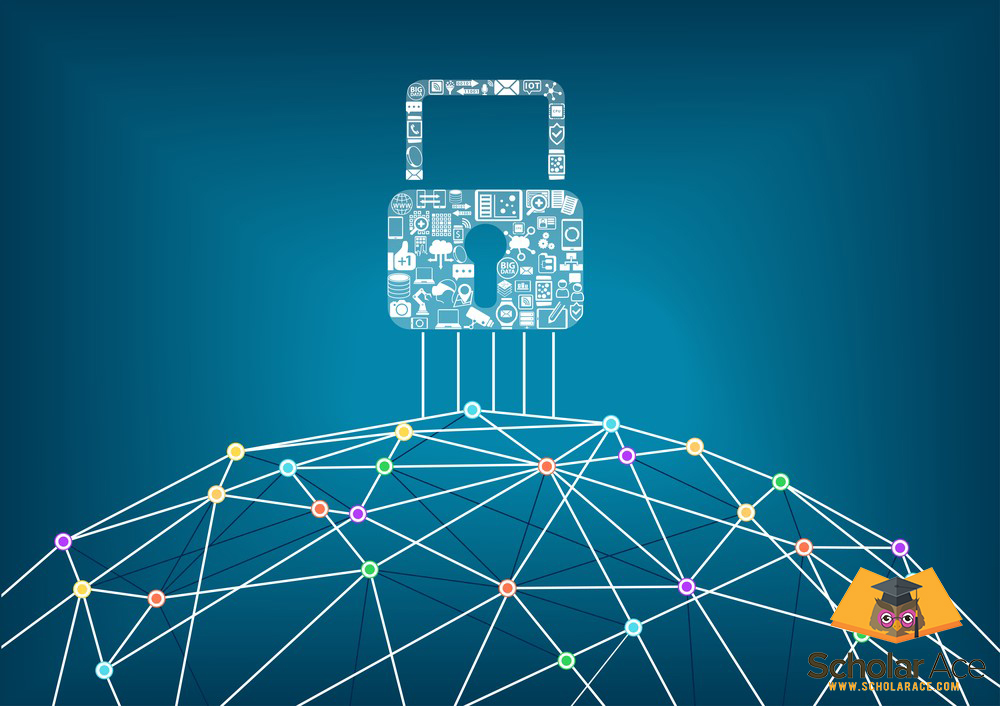
Frequently Asked Questions (FAQ)
What time can I take the CFE Exam and in what location?
You can take the CFE Exam at any time that is convenient for you since the exam is a Computer Based Test (CBT) examination. There are also no physical centres where the examinations can be taken. You must first register with the ACFE and have an approved CFE Exam Application on file before you can qualify to sit for the CFE Exam.
How long should the CFE Examination last?
Each section of the CFE Exam is made up of a total of one hundred questions, with a time frame of 75 seconds assigned for each questions to be answered. You are required to complete and submit all the sections for grading within thirty days of entering your exam activation key.
When will I get my CFE Exam results?
Your CFE Exam results will be sent to the email address you provided within 3 to 5 business days after you must have completed and submitted all the answers to the four sections of the examination.
How will I know if I am qualifying for the certificate or not? Which of the following best describes a certified fraud examiner?
In order to qualify, you need to possess strong moral character and also fulfil the professional and academic requirements before you can qualify to become a CFE. Your worthiness for the certification is dependent upon on a point system where honors are given for professional and academic credentials and fraud-related knowledge.
Do other associations issue the CFE certification?
No other association apart from the ACFE offers the CFE certificate. This is because the CFE credential is an exclusive feature of the ACFE only.
Am I eligible to become a CFE member since I already hold other certifications?
No. The CFE credential is an exclusive title itself with its own principles and requirements. Your other qualifications and certificate might be taken into account as a fragment of the qualifying points system, then again those will not automatically make you a Certified fraud Examiner.
Do I have to retake all four section of the examination if I don’t pass them all on my first attempt?
No. You have a total of three attempts to pass each of the four sections of the CFE Exam but you don’t have to retake all the questions. You are only required to provide the appropriate answers to only the questions you did not pass in the first attempt.
Why is the submit button not showing on the screen after I completed a section of the CFE exam?
The submit button is probably not available on your screen because you haven’t completed each of the four sections of the Exam. You are required to provide answers to all the sections of the exam before you can submit your answers for grading.


















